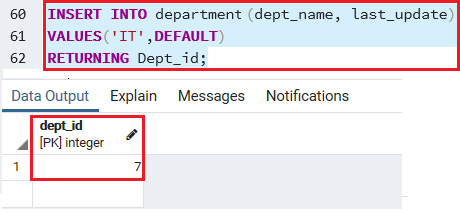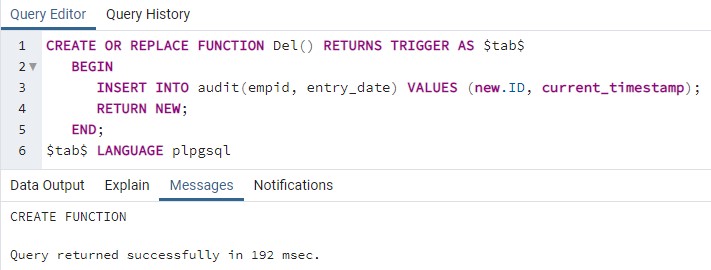
- #Postgresql insert trigger update#
- #Postgresql insert trigger pro#
- #Postgresql insert trigger free#
- #Postgresql insert trigger mac#
but it is a story that needs to be told, if only to remind people that IT is as much about relationships as it is about technology.About seven or eight years ago, maybe longer, I was working for the "Orange and Black" com. Why I have been absent the last Month or so, or: Milerky2's crazy job story.That is the totallity of their use.Requirements: They are used once a month by our Board of Education to open a google drive share. CREATE OR REPLACE TRIGGER will either create a new trigger, or replace an existing trigger. Currently we have 15 iPads that are aging out. Looking for your recommendations based on personal experience.
#Postgresql insert trigger mac#
Pluto today while enjoying Mac and Cheese with Fries as env.
#Postgresql insert trigger pro#
#Postgresql insert trigger free#
Snap! - Methane-Fueled Rocket, Hollywood AI Clones, Online Harassment, Free Ads Spiceworks Originalsįlashback: July 14, 1918: Core Memory Inventor Jay Forrester Born (Read more HERE.)īonus Flashback: July 14, 1965: First Fly-By of Mars (NASA’s Mariner 4) (Read more HERE.) 2 Answers Sorted by: 6 You must expand the record.PostgreSQL supports row-level and statement-level triggers.A trigger is a function invoked automatically when an INSERT, UPDATE, DELETE, or TRUNCATE occurs on a table.PostgreSQL requires you to define a user-defined function as the action of the trigger, while the SQL standard allows you to use any SQL commands.PostgreSQL allows you to define the statement-level trigger on views.PostgreSQL fires trigger for the TRUNCATE event.PostgreSQL triggers vs SQL standard triggersĮven though PostgreSQL implements SQL standard, triggers in PostgreSQL has some specific features:

The main drawback of using a trigger is that you must know the trigger exists and understand its logic to figure out the effects when data changes. For example, when a new row is added into the customer table, other rows must be also created in tables of banks and credits. For example, if you want to keep the history of data without requiring the application to have logic to check for every event such as INSERT or UDPATE.Īlso, you can use triggers to maintain complex data integrity rules which cannot implement elsewhere except at the database level. Triggers are useful in case the database is accessed by various applications, and you want to keep the cross-functionality within the database that runs automatically whenever the data of the table is modified. What is PostgreSQL CREATE TRIGGER command Event, The event parameter is used to define the event which requested the trigger, and it can be INSERT, UPDATE. In case the trigger is invoked after the event, all changes are available to the trigger. If the trigger is invoked before an event, it can skip the operation for the current row or even change the row being updated or inserted. Maybe you want to run a function if data is inserted into a table. You can specify whether the trigger is invoked before or after an event. Just like in most databases, in PostgreSQL a trigger is a way to automatically respond to events.
#Postgresql insert trigger update#
The differences between the two kinds are how many times the trigger is invoked and at what time.įor example, if you issue an UPDATE statement that modifies 20 rows, the row-level trigger will be invoked 20 times, while the statement-level trigger will be invoked 1 time. PostgreSQL provides two main types of triggers:

The difference between a trigger and a user-defined function is that a trigger is automatically invoked when a triggering event occurs. To create a new trigger, you define a trigger function first, and then bind this trigger function to a table.

An event could be any of the following: INSERT, UPDATE, DELETE or TRUNCATE.Ī trigger is a special user-defined function associated with a table. What are PostgreSQL triggersĪ PostgreSQL trigger is a function invoked automatically whenever an event associated with a table occurs. And in the branches there are statements, they need to be terminated by a semicolon.

Summary: in this tutorial, you will learn about PostgreSQL triggers, why you should use the triggers, and when to use them. 2 Answers Sorted by: 8 CASE as a control structure is closed with END CASE (whereas the expression is closed with just an END ).


 0 kommentar(er)
0 kommentar(er)
